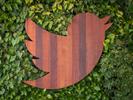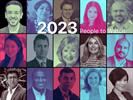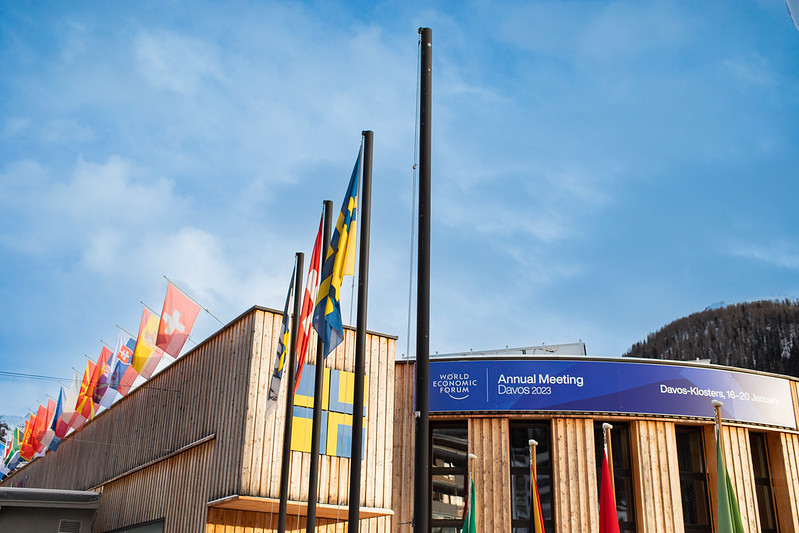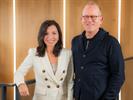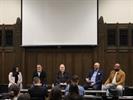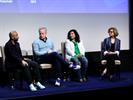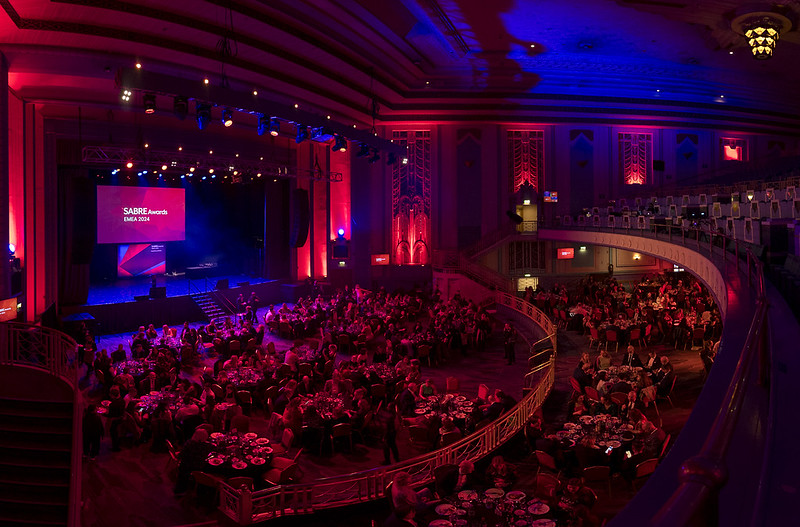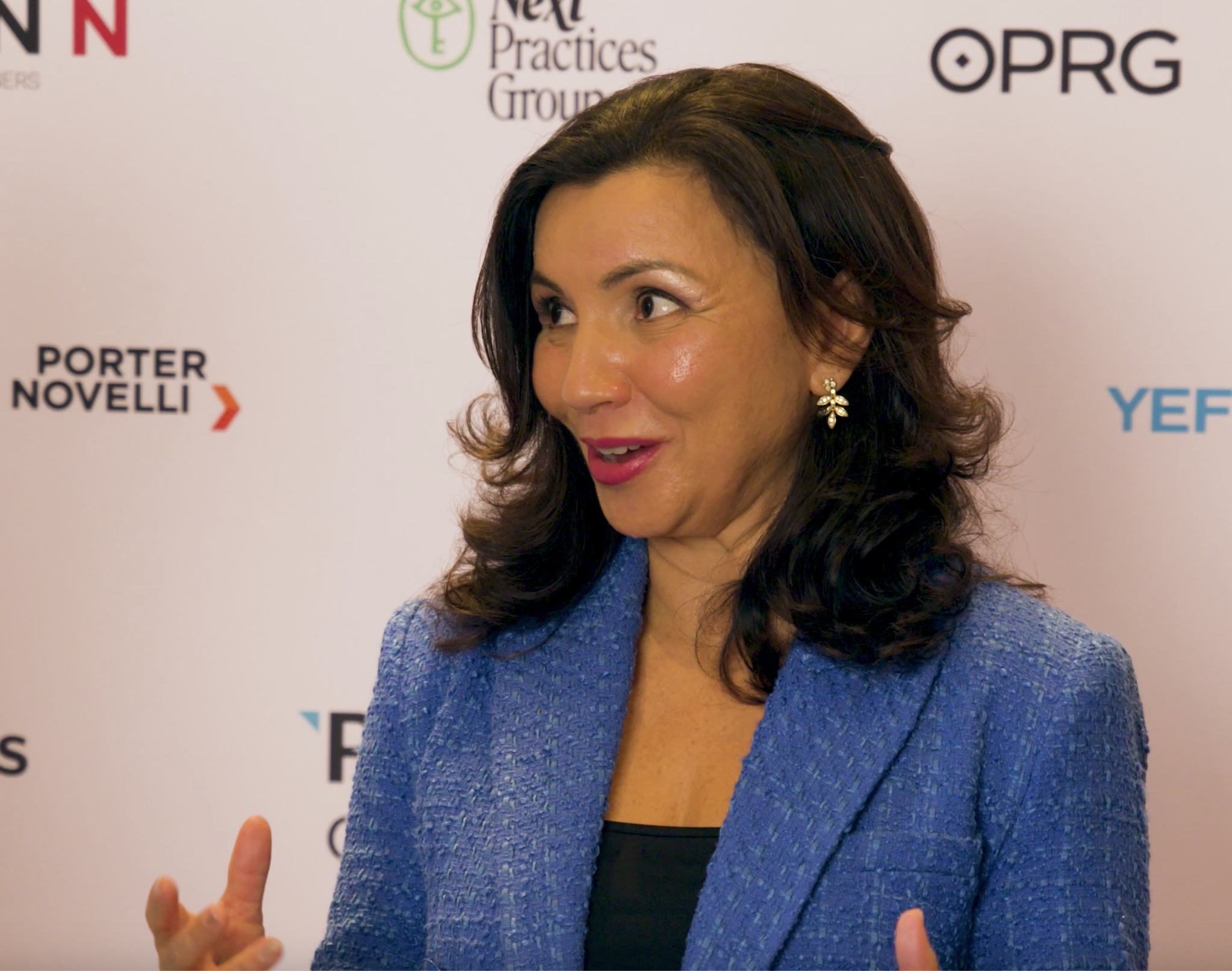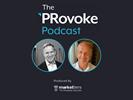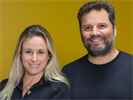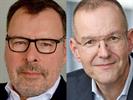Arun Sudhaman 11 Jul 2013 // 7:53AM GMT
Pete Blackshaw joined Nestle in 2011, one year after the company endured a debilitating online tussle with Greenpeace, in the process becoming a high-profile example of a big company that had misjudged the power of social media.
Blackshaw was hired to bring a fresh perspective as the company's first head of digital marketing and social media, following a lengthy digital career that included several years at Nielsen BuzzMetrics. Since relocating to Nestle's global HQ in the Swiss town of Vevey, Blackshaw has worked tirelessly to boost the FMCG giant's digital infrastructure, setting up a central digital lab that monitors issues, identifies opportunities and sets policy for the company's two thousand-odd brands.
In a lengthy conversation with the Holmes Report, Blackshaw reflects upon his experiences so far at Nestle, focusing in particular on the natural tension that exists between 'gatekeeping' and 'enabling' at such a huge organization. Blackshaw also touches upon numerous other issues, including the pros and cons of a dual reporting line; the online threats Nestle faces; the future of the website; his favourite digital tools and apps; and, what, exactly, he wants from 'bleeding edge' agencies.
How did moving to Nestle change the way you view social media?
It didn’t really change the way I think about social. The opportunity is very similar - connect with consumers, listen deeply to them, translate that to engagement strategies. I think some of the hurdles and challenges and stakes are arguably higher in a large organization but at the same time you can use social media as a source of inspiration to motivate. For me it was very exciting to get back on the client side. Entrepreneurs exploit momentum, and this is a great time – an inflection point, if you will – to help drive change in a large enterprise.
How do you manage a couple of thousand brands in social media?
To be precise, we have nearly 150 million fans across 650 pages on FB, and we produce 1500 pieces of original content on that platform every day. That’s before you count responses, and platforms like Twitter, Pinterest, Google+ add significantly to the overall tally. We are a radically decentralised company so there are social media guidelines and protocols, but largely it’s smart guardrails and re-applications of best practices - shining a light on the positives, sandbagging the negatives. That’s essentially what I do, I’m a bit of a smart router in the organization. One of my favourite sayings is ‘steal and scale’ - there might be something in the Philippines that could work really well in another market.
I’m also an advocate of leading against a backdrop of what I call 'digital dualisms.' A dualism is a tension point, an ostensible opposite. The biggest one in my role is 'enabler versus gatekeeper.' Effective digital leaders are big enablers. They encourage, empower, and recognize achievement. At the same time, they have a fiduciary responsibility to 'gatekeep' the proper behavior, and ensure responsible protocols. You need to balance the two, and that can be a challenge.
You have a dual reporting structure into marketing and corporate communication. How helpful is that?
Clearly, transparency is a huge reality in the social media world so it’s really hard to decouple branding with corporate communications and public affairs. Inevitably all the issues get co-mingled. From my perspective, it’s greatly aided me. Some may argue that dual reporting has a certain schizophrenia associated with it. I’ve actually found it’s clarified a lot of things and given me a unique perch to look at a number of issues. And I also have great deal of passion for the social responsibility side of what we do. We also know those issues are important to consumers, and are increasingly evident to them across a broad range of digital and mobile tools.
A good example of the convergence is the “Beyond the Label” effort we’re piloting in the UK and for Nescafe Dolce Gusto. It’s one of the most comprehensive QR code initiatives in the industry, and it provides a user-friendly window into deeper levels of product ingredients, our supply chain practices, and our commitment to social responsibility. Through that lens, there’s clearly a connection between consumer and corporate communications.
When you joined Nestle, the backdrop was the company’s missteps responding to the Greenpeace online campaign. Nestle seems more surefooted today in dealing with online issues. Do online threats still worry you, or are you confident you can handle them?
That was clearly a teachable moment. There were two fundamental issues. The substantive issue was supply chain related to palm oil, which I think we addressed extraordinarily well. The second issue was one of social media execution, which probably made the issue worse and probably earned us ‘spurned media’, which is earned media gone negative. I’d never say I’m completely satisfied. Consumers and stakeholders have raised the bar of expectations. Those are issues that still require a lot of work but I’m happy we’ve made a concerted effort to establish a stronger social media presence and I think we’ve been thinking hard about resourcing against this area. In this area I work closely with both media relations and public affairs colleagues, and there are many key interdependencies here. Still much to do here though, but I’m encouraged with our progress.
You have a digital hub where you are constantly monitoring issues. Doesn’t that put you in something of a paranoid mindset, being aware of all of the stuff people are saying about Nestle? Does it put you on the backfoot?
I’d say it mostly puts us on the front foot. We have the 'Digital Acceleration Team' and, as part of that, we have the consumer engagement center. The listening screens focus on everything from consumer interactions via customer service to internet conversations and interaction on FB. More importantly, it really points to opportunities - a lot of the conversation validates content strategy and execution. There’s a lot of conversation to study. And there’s a lot of consumers that do expect responses.
The hard part is operationalizing this, and what most keeps me up at night is scaling community management. There may be some element of apprehensiveness about the volume but there’s also tremendous excitement that consumers are playing back our brands. I sincerely believe the conversation is infinitely revealing of brand value and translating that into brand insights, better identification of unarticulated needs. So I think it all balances out.
You mentioned all of the social media channels that Nestle brands are working across. With that in mind, what is the future of the website as an engagement platform? Do websites still matter?
I think websites still matter but we need to think distribution, not destination. What really matters is the social ecosystem and how we syndicate and distribute our digital assets to where the consumers are. For most of our brands, the attention has shifted to the social ecosystem. Websites need to think about their role. This is beyond just Nestle. All websites need to radically adjust to mobile realities. The traffic patterns suggest that most websites are flat to declining with the exception of more transactional or ecommerce sites. The most significant growth is on platforms like Facebook. Twitter is obviously very important around new product launches. Pinterest is starting to establish a very important niche in certain categories.
Do you find that you’ve needed to change the skills people have within the company?
One thing that really attracted me to Nestle is the brand building framework. This is something my boss, head of marketing Tom Buday and his boss, Patrice Bula, have pushed hard. I’ve tried to keep the digital and social activities as closely tied as possible to the core foundations. The biggest mistake we can make is to build digital in a 'shiny new object' silo. In fact, digital powers and reinforces brand fundamentals. An example is that we know from our experience there’s a clear relationship between message quality and ROI. We’ve put a lot of pieces of ad copy into something we refer to as our return on brand-building investment framework. What we know from digital is message quality still really matters. You get a debit if you pursue a path of ad copy that annoys, interrupts, plays fast and loose with privacy, and a big earned media credit if you get things right. The fundamentals remain the same; message quality matters. Even listening has deep historic roots in consumer understanding.
Leading digital is a bit of a dance between stimulation and integration.We need to stimulate the enterprise around digital because you need to create momentum but you also need to keep it integrated into your core foundations. This is something I’ve really tried to pay a lot of attention to as we’ve advanced our efforts.
What are some digital and social media tools we should be watching?
I like Socialbakers from an enterprise perspective. They’ve done a very good job of making sense of the social world. There’s a lot of tools that give you terrific insight into your brand, but Socialbakers does a terrific job of helping you understand how your brand stands relative to peers and competitors. I’m a fan of Salesforce Chatter - they do a very good job of making that tool available in mobile devices and applications. In my personal life, I love PicJointer, it lets you put photos together. I really like Kindle Reader - it’s easy to read, tag, share. LinkedIn has really got a great app, I’m pretty impressed with how they organize data and the quality of discussion. I use Pinterest a lot - I’ve got one of the biggest collection of vintage ski posters. And, with my kids, I love Doodle Buddy. It facilitates parent/child 'co-creation.'
Every type of agency claims to be the go-to discipline for digital and social. What exactly are you looking for from your agencies?
They have to be great brand-builders and understand brand essence and tone of voice and know and appreciate Nestle’s historical approach to brand-building. We’re in the business of brand excellence - we’re not doing this for pure fun and games and experimentation. Connecting the dots is critical - I do think there’s a lot of very important synergies between old media and new media. I want an agency that’s really thinking about those critical connections.
Measurement’s really important - a lot of it can be measured in realtime and you can optimize as you go. We obviously work with a really broad range of agencies. We all aspire to that perfectly integrated agency, but it’s pretty hard to find, and you need to protect a certain degree of flexibility, at least at this early stage, of ensuring you are working with agencies that are on the bleeding edge.
Which are those agencies that are on the bleeding edge?
I’m not going to name names! Adaptive content is a really important skill. Taking this notion of environmental context such as pop culture and weaving it into your narrative. The good agencies will really understand how to do that consistently, but also in a way that doesn’t stray from the brand tone of voice. Brands like Purina, Nespresso, Skinny Cow, DiGiorno, and Perrier have seen good success with agencies on this front.
A lot of brands find that challenging.
It’s difficult in a digital environment for big global brands. You want to protect brand expertise at local levels but you also want to be consistent. And it’s hard to do. This is where you have guidelines and guidance but you don’t want to be too onerous with the how-to book.


































.jpg)








